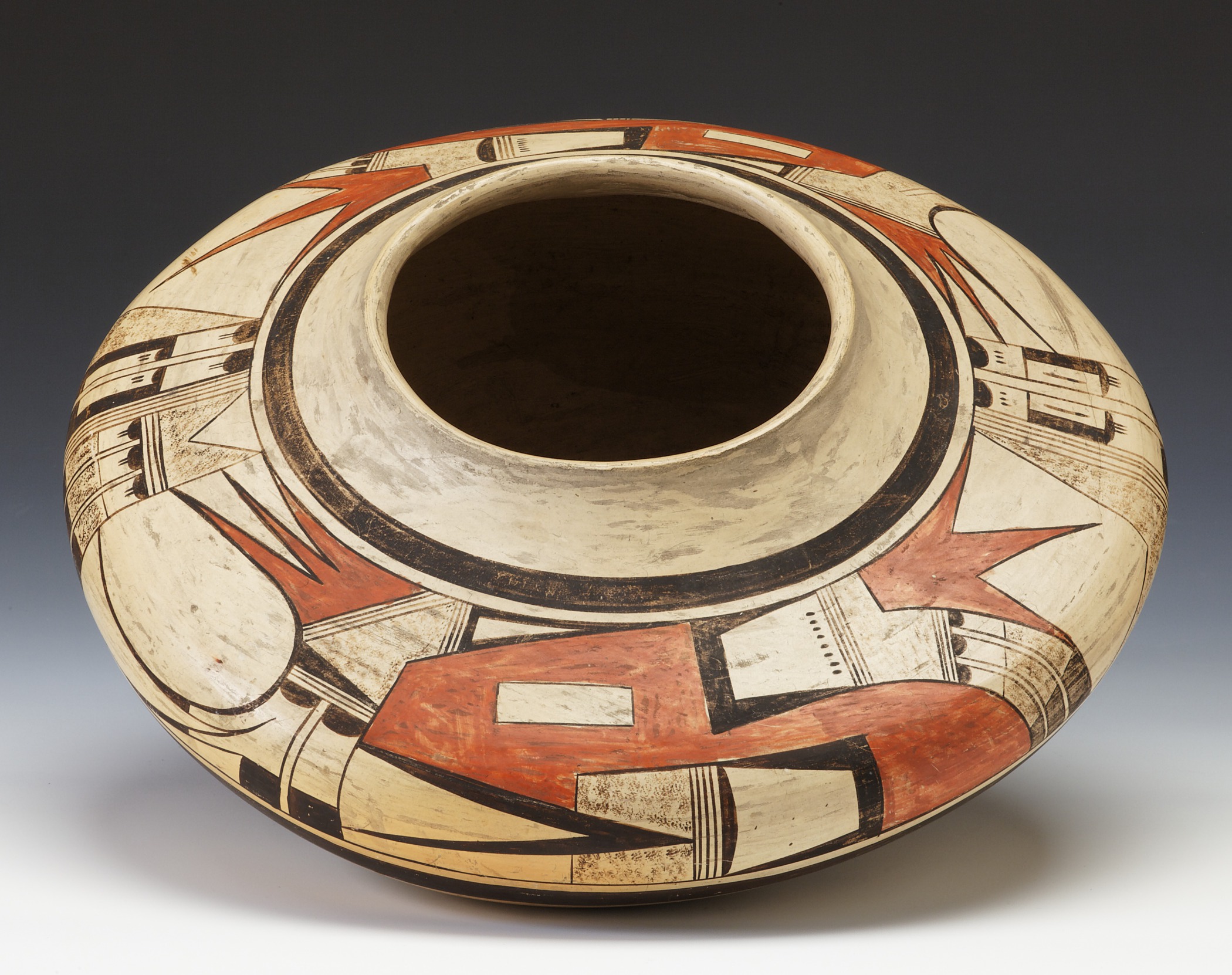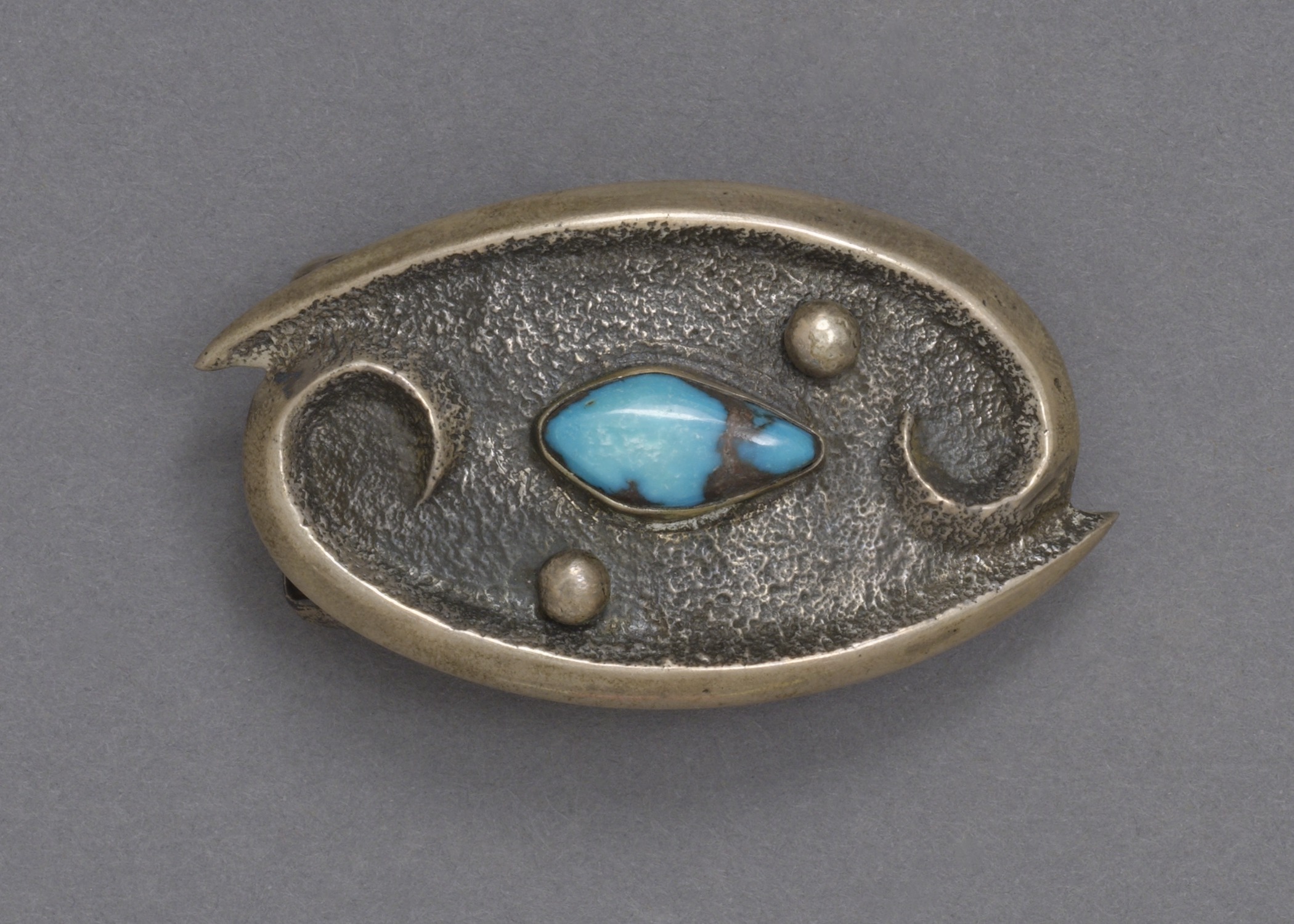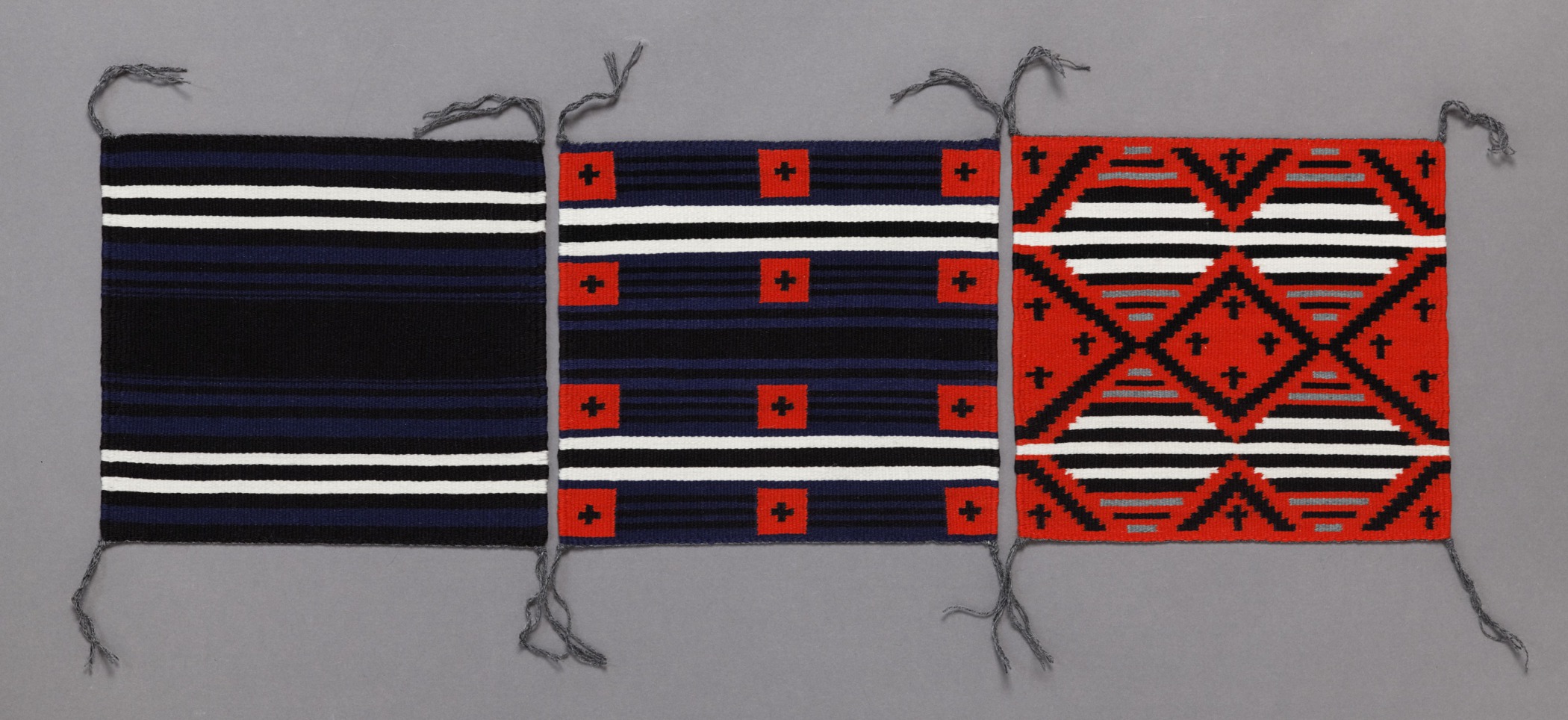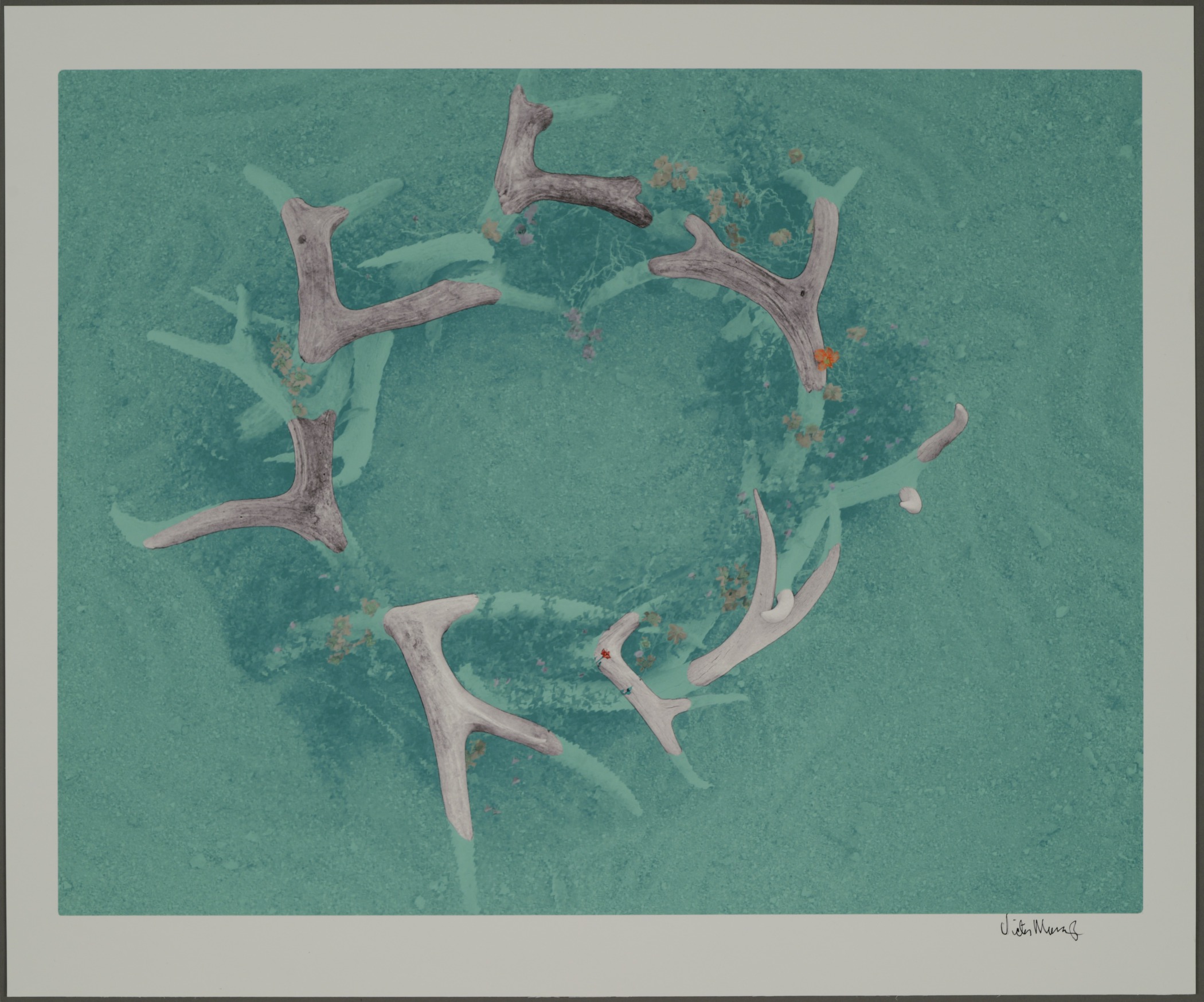Barbara Teller Ornelas, American (Diné [Navajo]), born 1954
Chief Blankets: Phase One; Phase Two; Phase Three
- 2010
- Wool
- 10 × 9 1/2 in.
Hood Museum of Art, Dartmouth College: Purchased through the Alvin and Mary Bert Gutman ’40 Acquisitions Fund and the Hood Museum of Art Acquisitions Fund; 2010.71. ©Barbara Teller Ornelas
visibilityLook & DiscussChief’s Blankets are the most valuable of all Diné (Navajo) weavings. They are called “Chief’s Blankets” because only chiefs or wealthy individuals could afford them. They were worn by Diné but traded to other people, like the Sioux, the Cheyenne, and the Ute. The blankets were prized because of the quality of the weaving and their usefulness.
They were woven so tightly that they were practically waterproof. They could be worn as coats by day and used as blankets by night. They were lighter than buffalo skins. They were also prized for their beauty. Diné men of high rank might wear them on ceremonial occasions.
From the late 19th century on, tourists and collectors began actively purchasing Diné weavings. Many Diné women weavers supported their whole families with their work. In the 19th century, a Chief’s Blanket would cost the equivalent of a year’s salary. Today, a well-preserved Chief’s Blanket could sell for hundreds of thousands of dollars.
The pieces in Barbara Teller Ornelas’s Chief Blanket: Phase One; Phase Two; Phase Three are finely woven miniature versions of the types of blankets made in the nineteenth century.
explore the object
The horizontal pattern of the Chief Blanket varied dramatically from the vertically striped wearing blankets that preceded it.
The First-Phase Chief Blanket, dating from approximately 1800 to 1850, had broad stripes in dark colors, often black with narrow stripes of indigo within the bands, running horizontally around the body when the blanket was worn. These evenly spaced bands at the top and bottom of the blanket were offset by a broader, double-wide band in the midsection of the blanket, appearing at what would have been the wearer’s waistline.
Second-Phase Chief Blankets, made predominantly between the early years of the 19th century and 1870, maintained the basic patterning of the First Phase but added twelve blocks or areas of color to the blanket. These spots of color were most often red, their vibrancy contrasting with the natural white and black bold stripes of the rest of the blanket.
A Third-Phase design, prominent between 1860 and 1880, reduced the number of color areas from twelve to nine. Sometimes the color areas became diamonds, with whole, half, and quarter diamonds appearing in various areas of the pattern. These boldly patterned blankets became particularly popular with Plains and Great Basin tribes to the north and east of the Diné homeland.
meet the artist
Barbara Teller Ornelas learned to weave from her mother, Ruth Teller. She came to recognize her weaving as art and began to market it that way. She entered contests, did demonstrations, and exhibited her work in galleries, rather than at trading posts or tourist shops. She markets her work directly to buyers, which has provided a model for other young weavers trying to gain recognition and sell their work.





